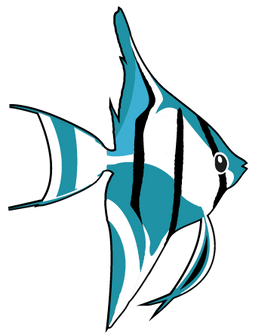Description
The Red Beckford's Pencilfish, scientifically known as Nannostomus beckfordi, is an exquisite and captivating freshwater fish prized for its vibrant colors, graceful appearance, and peaceful demeanor. Belonging to the family Lebiasinidae, these fish are native to South America, particularly found in slow-moving tributaries and streams of the Amazon Basin.
This species is named for its slender, pencil-like body shape, showcasing a brilliant array of red, orange, and gold hues that beautifully adorn its elongated form. The Red Beckfordi Pencilfish boasts a shimmering iridescence along its scales, reflecting light in an aquatic display that captivates the observer's attention.
Their dorsal fin is elongated and adorned with striking red or orange hues, further accentuating their elegance. Typically reaching around 1.5 to 2 inches (3.8 to 5 centimeters) in length, these fish are relatively small, adding a delicate and graceful presence to planted aquariums.
Red Beckfordi Pencilfish are renowned for their tranquil and peaceful temperament, making them excellent additions to community aquariums. They coexist harmoniously with other peaceful fish species and are best kept in small groups of six or more individuals. In larger groups, they exhibit more natural behaviors and are less prone to stress.
They prefer a well-planted aquarium with subdued lighting and areas of dense vegetation or floating plants, replicating their natural habitat. Providing ample hiding spots and a natural environment contributes to their comfort and security.
Maintaining stable water conditions is crucial for their well-being. These fish thrive in slightly acidic to neutral water with temperatures ranging from 72°F to 78°F (22°C to 26°C) and a pH level between 6.0 to 7.0. Regular water changes and good filtration support their health and vibrant colors.
Red Beckfordi Pencilfish are primarily micropredators, feeding on small insects, zooplankton, and other tiny organisms in their natural habitat. In captivity, they readily accept high-quality flake or micro-pellet foods. Additionally, offering live or frozen foods like daphnia, brine shrimp, or small insects enhances their diet and coloration.
Payment & Security
Your payment information is processed securely. We do not store credit card details nor have access to your credit card information.


